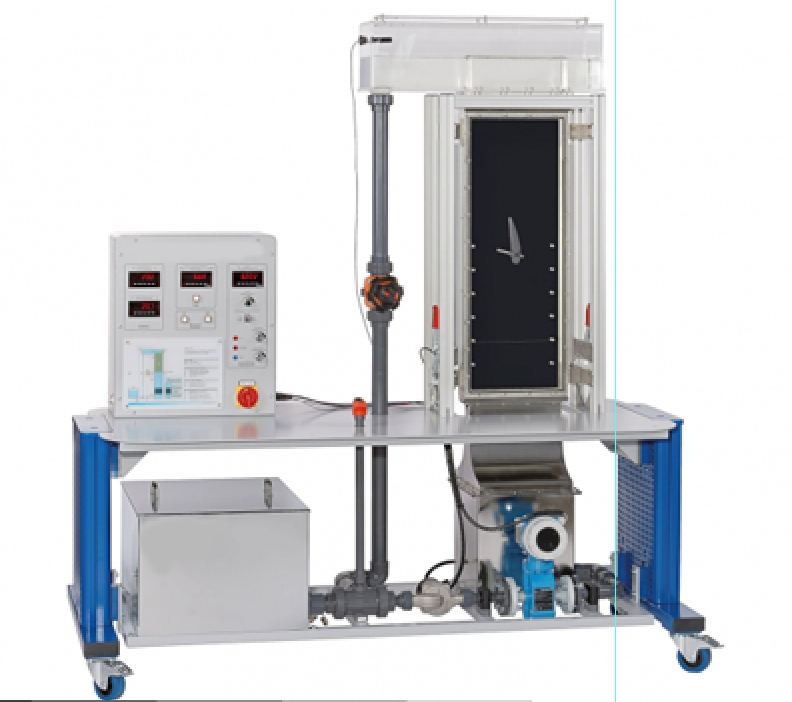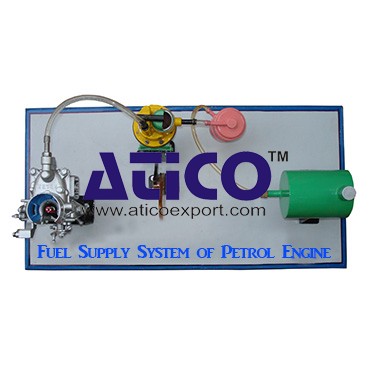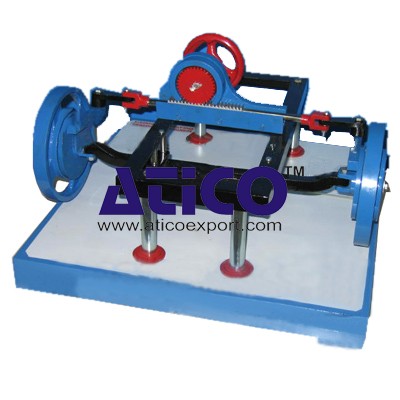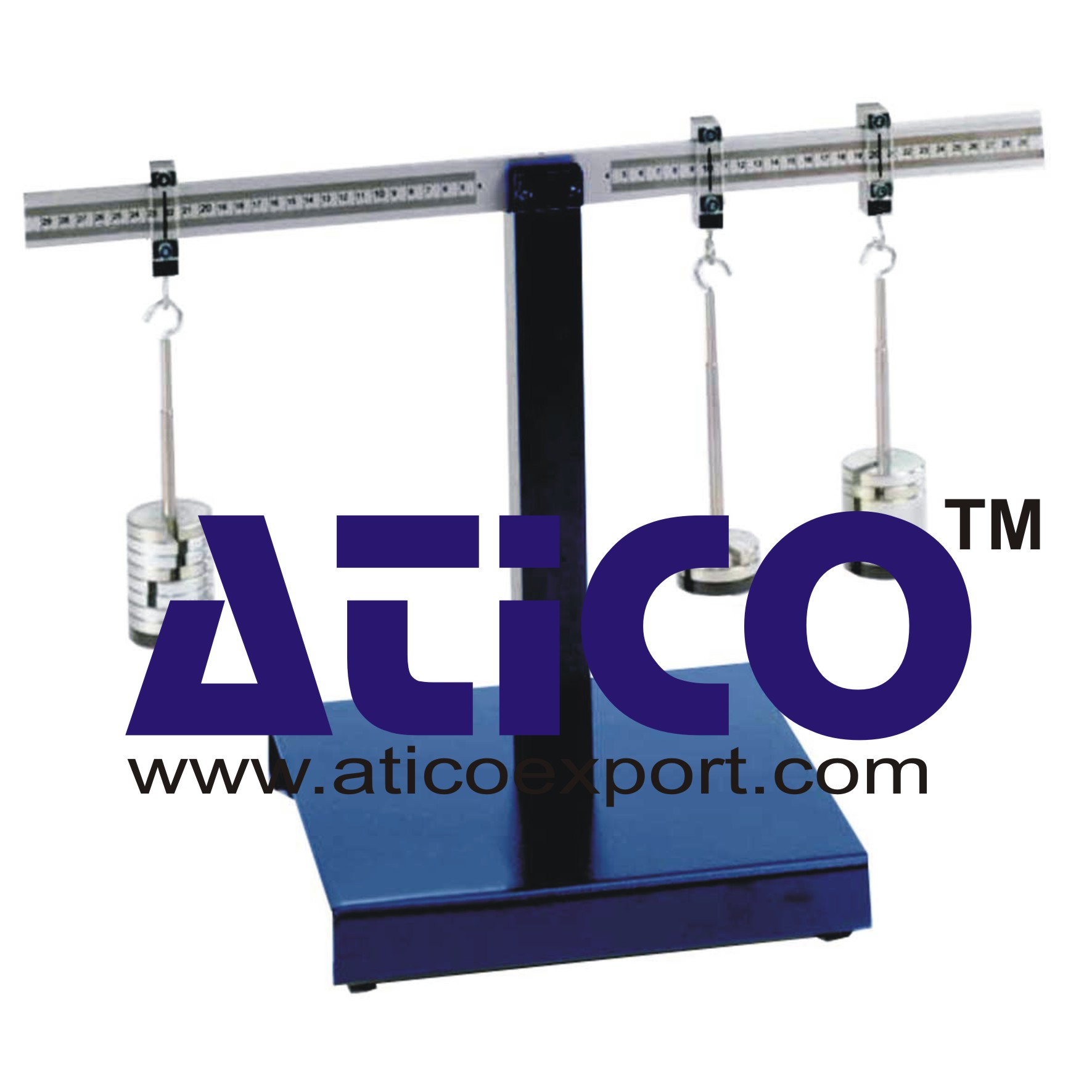Vertical Visualization of Flow Fields
Categories: Engineering Lab EquipmentFine gas bubbles are perfectly suited to visualising flow fields. Due to analogies, many flow processes that occur in air can also be demonstrated by experiments in water.The trainer consists of a ver...
Product
Description
Fine gas bubbles are perfectly suited to visualising flow fields. Due to analogies, many flow processes that occur in air can also be demonstrated by experiments in water.
The trainer consists of a vertical experimental section in which an interchangeable model is inserted. Water flows from bottom to top through the experimental section. Electrolytically generated hydrogen bubbles rise with the flow, flow around the model and visualise the flow.
Different models are available: drag bodies (e.g. aerofoils and cylinders) or changes in cross-sections. The length of the experimental section enables for a long wake, where, for example, vortex streets form completely. The black background and the lateral illumination ensure optimal observation. The model can be inserted in two different positions.
Learning Objectives/Experiments
Visualisation of two-dimensional flows
Streamline course in flow around and through models
Flow separation
Vortex formation, demonstration of Karman vortices
Qualitative observation of the velocity distribution in laminar flow
Analogy to air flow
In conjunction with a special camera (i.e. PCO Pixelfy) and suitable software (i.e. ImageJ):
image processing evaluation of the experiments (particle image velocimetry, particle tracking velocimetry)
Specification
Electrolytically generated hydrogen bubbles visualise flow fields of different models
Closed water circuit with experimental section, storage tank, pump, valve to adjust the flow velocity
Vertical experimental section with black background, LED illumination on both sides and 2 insert positions for the model
Supplied models: 2 aerofoils, triangle, semicircle, hollow hemisphere, 2 cylinders (different sizes), 2 models for changes in cross-section
Low-turbulence flow using stabilisation tank with flow straightener
Bubble generator: platinum wire as cathode and frame of experimental section as anode
Cathode can be inserted in different positions
Setting cathode current, pulse and pause duration
Switch cabinet with displays for cathode current and flow velocity
Technical data
Pump, 3 stages
max. flow rate: 9,7m³/h
max. head: 12m
power consumption: 400W
Storage tank: approx. 75L
Experimental section
LxH: 300x860mm, W=49mm
Bubble generator
current: 0…2A
platinum wire as cathode
Measuring ranges
flow velocity: 0…13,3cm/s
current: 0…2000mA
temperature: 0…100°C (water)
230V, 50Hz, 1 phase
230V, 60Hz, 1 phase; 120V, 60Hz, 1 phase
UL/CSA optional
LxWxH: 1850x800x1990mm
Weight: approx. 260kg
quick overview :
Fine gas bubbles are perfectly suited to visualising flow fields. Due to analogies, many flow processes that occur in air can also be demonstrated by experiments in water.
The trainer consists of a vertical experimental section in which an interchangeable model is inserted. Water flows from bottom to top through the experimental section. Electrolytically generated hydrogen bubbles rise with the flow, flow around the model and visualise the flow.
Different models are available: drag bodies (e.g. aerofoils and cylinders) or changes in cross-sections. The length of the experimental section enables for a long wake, where, for example, vortex streets form completely. The black background and the lateral illumination ensure optimal observation. The model can be inserted in two different positions.
Learning Objectives/Experiments
Visualisation of two-dimensional flows
Streamline course in flow around and through models
Flow separation
Vortex formation, demonstration of Karman vortices
Qualitative observation of the velocity distribution in laminar flow
Analogy to air flow
In conjunction with a special camera (i.e. PCO Pixelfy) and suitable software (i.e. ImageJ):
image processing evaluation of the experiments (particle image velocimetry, particle tracking velocimetry)
Specification
Electrolytically generated hydrogen bubbles visualise flow fields of different models
Closed water circuit with experimental section, storage tank, pump, valve to adjust the flow velocity
Vertical experimental section with black background, LED illumination on both sides and 2 insert positions for the model
Supplied models: 2 aerofoils, triangle, semicircle, hollow hemisphere, 2 cylinders (different sizes), 2 models for changes in cross-section
Low-turbulence flow using stabilisation tank with flow straightener
Bubble generator: platinum wire as cathode and frame of experimental section as anode
Cathode can be inserted in different positions
Setting cathode current, pulse and pause duration
Switch cabinet with displays for cathode current and flow velocity
Technical data
Pump, 3 stages
max. flow rate: 9,7m³/h
max. head: 12m
power consumption: 400W
Storage tank: approx. 75L
Experimental section
LxH: 300x860mm, W=49mm
Bubble generator
current: 0…2A
platinum wire as cathode
Measuring ranges
flow velocity: 0…13,3cm/s
current: 0…2000mA
temperature: 0…100°C (water)
230V, 50Hz, 1 phase
230V, 60Hz, 1 phase; 120V, 60Hz, 1 phase
UL/CSA optional
LxWxH: 1850x800x1990mm
Weight: approx. 260kg
Product
Reviews
add Review
reviews
No Review Yet.
Copyrights © 2025 All Rights Reserved by Atico














Product
Reviews
add Review
reviews
No Review Yet.